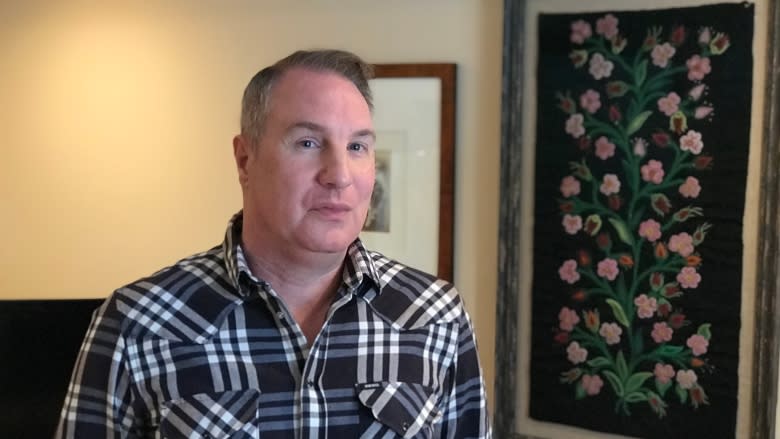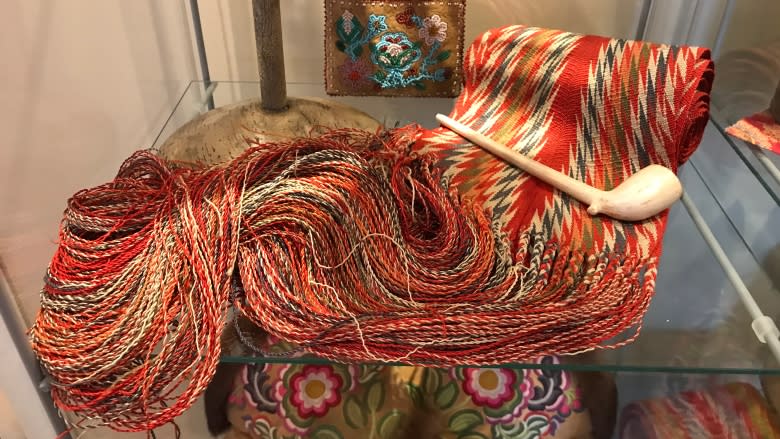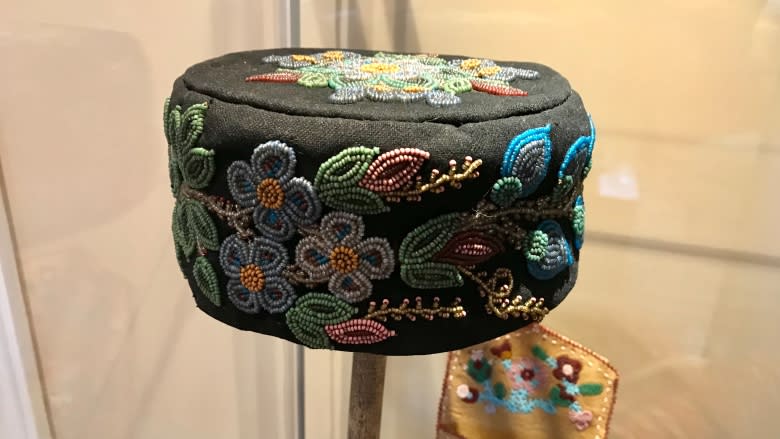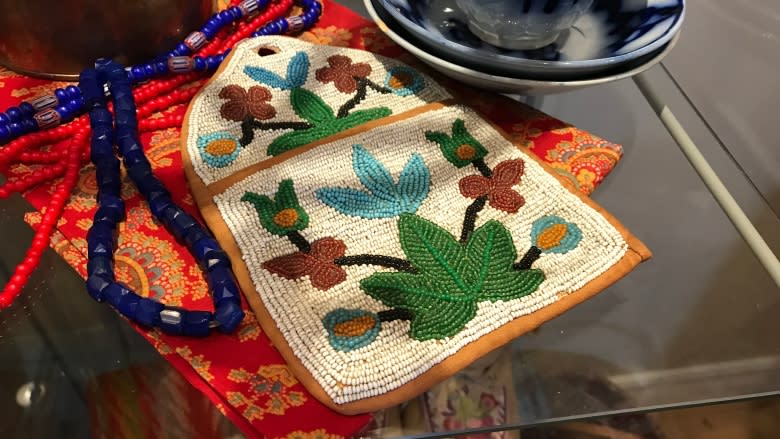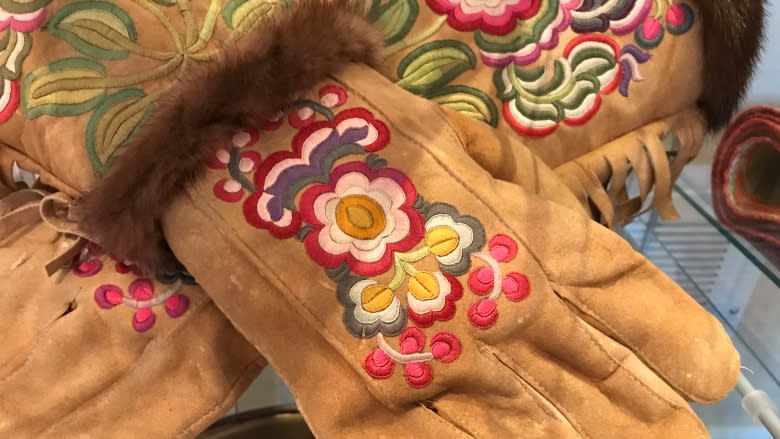Métis poet searches far and wide for artifacts to 'bring them home'
When he's not writing or teaching, a Métis poet and university professor dedicates his time to searching antiques shops and online auction sites for Métis artwork and artifacts in hopes of "bringing them home."
Over the past two years, Gregory Scofield has amassed a colourful collection of historic Métis sashes, hats, gloves, tapestries, beadwork, and other items in his Sudbury home.
"They're pieces that I've either found online and at kind of online auctions, or pieces that I've been lucky enough to find in antique stores," said the Laurentian University English professor, who's a descendent of the Red River Métis in Manitoba.
"It became important for me to repatriate them. It became important for me, in a way, to bring them home. I'm also a craft person. I grew up doing beadwork. I know the work that goes into creating a piece of art."
'Like collecting my own history'
Scofield's passion for collecting the items began to take off when he located an "arrow-point" sash from about 1830 in Sante Fe, New Mexico through an antiques dealer. When it arrived, he knew he was beginning a special journey that would further bolster his connection to his culture and history.
"It's very, very difficult to find early 19th century sashes. So this was an incredible, incredible find for me," he said. "It's very much like collecting my own history."
That history is strongly reflected in some of his other cherished items, like a beaded wool hat known as a "smoking hat," and a pair of embroidered gauntlet gloves that originated in northern Manitoba, both located in the United Kingdom.
The distinct Métis beadwork is what makes much of the art he finds stand apart, according to Scofield. "We became known as the floral beadwork people, because we had kind of taken beadwork to almost a tapestry level," he said.
"Tapestries that you would see in churches and things like that. So Métis craftswomen really had taken the best of both of those worlds — both Indigenous and European worlds and really came up with a unique form of artistic expression."
For Scofield, finding the pieces and getting them shipped to his house are just the firsts step. He believes it's important to honour the works themselves and the people who made them.
'I feel very much like a caretaker'
"Everything that comes into my house, those items are always smudged. I always honour the energies that have gone into creating them. I try to honour the energies that have carried those things, because of course some of these pieces are really incredibly old," he said.
"And those pieces would have gone through different family members over generations and generations, and then inevitably ended up in auction houses or ended up in a non-Indigenous collection somewhere, or a museum somewhere."
Scofield doesn't plan on holding on to the items permanently. He wants to one day pass them on to a Métis cultural institution like the Gabriel Dumont Institute so people can learn from them for generations to come.
"I don't look at myself as the owner of these items. I feel very much like a caretaker," he said.
"There are so many things kind of folded into this for me. There are acts of resistance. There are acts of repatriation. There are acts of kind of reconciliation. There are all of these things that are folded into me finding these pieces and doing my best to bring them home."

